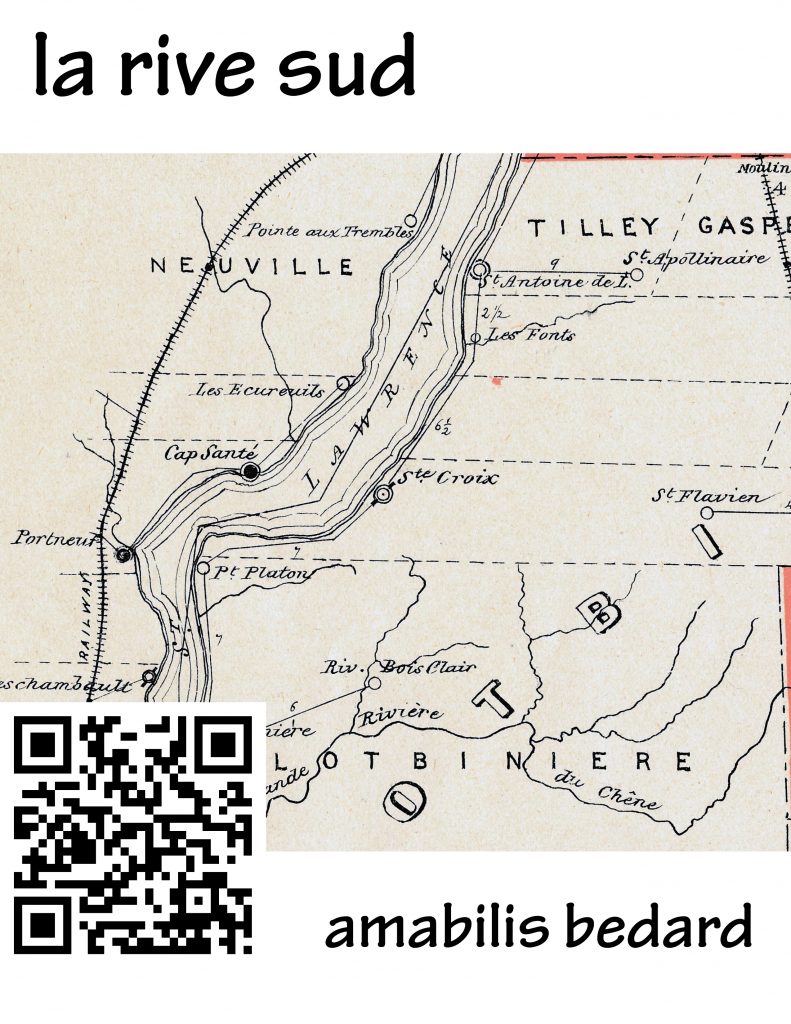
It was a dusty, washboard of a road that used to lead north out of Selkirk to St John’s Cathedral Boys’ School, three miles beyond. I took the short car ride for the first time on Good Friday afternoon in 1962 with my mother Nancy who was visiting me at St. John’s Ravenscourt, another Manitoba boys’ school in Winnipeg.
I had been sent to Ravenscourt – the Winnipeg equivalent of such famous Ontario private schools as St. Andrew’s and Upper Canada College – the previous September at age 11. I was the youngest of four children and the only one still at home in Medicine Hat, Alberta. My father Corry worked as a physiologist for the Department of National Defence at the Suffield Experimental Station. My parents had sent me away because they felt I’d be happier in an environment where there were others my age.
I was happy and did well in the classroom at Ravenscourt, but the rest of the time I was pretty miserable — a combination of too much free time, bullying, and homesickness. I undoubtedly would have been back home the next year had my mother not read in the Star Weekly magazine about a new and unusual Anglican weekend school near Winnipeg. It had announced it was becoming a full-time school the following September.
Its tough outdoor program reminded her of Gordonstoun, an outdoors-oriented school in Scotland she’d read about before we immigrated from England in 1951. She very much approved of the school’s three objectives: to teach boys to think, to encourage and satisfy their craving for adventure, and to establish a lifetime foundation of religious truth. As we set off for Selkirk my mother was eager to discover if the school was as appealing as it sounded.
I didn’t fully appreciate just how far into the Manitoba countryside we were heading until the car bumped down off the pavement at the north end of town and plowed into a cloud of dust left by the truck ahead. Barking dogs raced out from shabby houses, snapping at the car in a futile attempt to slow our progress.
Before long, the string of buildings on both sides of the road gave way to open farmland and pockets of light industry. First came a machine shop. That was followed by a concrete plant. Finally, there were enormous piles of sand stockpiled for silicon extraction.
The first sign that the road would be taking us to the Red River was the appearance of several commercial fishing boats propped up in the grey mud of a lagoon beside the river. Just as it appeared as though our path lay away from the river the car dipped into a sharp right corner. The panorama that suddenly opened was impressive. A wide river led off to the horizon where stood, like a reassuring beacon, an old stone church. The road followed a cut bank along the nearshore while marsh and undergrowth lined the opposite shore.
We sped by a bush plane hangar and were soon passing a white wooden church and a collection of neatly kept houses. Ahead lay more trees which once reached again blocked our view of the river and the stone church.
Almost immediately on the left, a large black and yellow sign caught my eye announcing the school. We turned into a U-shaped driveway lined with jack pines and a white fence and pulled up to the front door of a stone structure and a cluster of two-story frame buildings.
Once out of the car I soon noticed the place was a beehive of activity. Nearby a pair of boys stood on ladders removing a plastic covering from the window while scattered about the grounds were groups of people raking leaves or tending fires of burning grass.
Inside the scene was one of cheery bedlam. Down a dimly-lit hallway that began outside headmaster Frank Wiens’s office and led into the main part of the building, you couldn’t see as much as you could hear. Dishes and pots clashed somewhere, doors slammed in the distance, footsteps thundered up and down unseen stairs, and everywhere there seemed to be the happy din of young voices talking, singing, laughing, sometimes shouting.
“It’s afternoon duty period,” said Mr. Wiens with a smile as he ushered us into his cluttered cubicle of an office and closed the door.
Frank Wiens was the son of a Mennonite farmer who immigrated from Russia in 1925, two years before he was born. He grew up in Poplar Point, Manitoba and after graduating from high school attended the University of Manitoba where he completed a Bachelor of Education. He married in the late 1940s and with his wife Nancy raised 10 children.
The normal enrollment procedure was to apply in writing, then wait to be interviewed, and accepted or rejected. But at this point in the school’s young history, Mr. Wiens was more interested in finding enough students to fill the place, not worry about formalities. As a result, he made it clear by the end of our brief chat that I would be accepted if I were to apply.
Mr. Wiens had been evaluating students since the early 1950s when he began teaching in the public school system. His current position was teaching math at Sargent Park High School in Winnipeg. His obvious experience and competence immediately put prospective parents at ease. They liked him, and more importantly, they trusted him.
Mr. Wiens begged off giving us a tour because of his busy schedule, but he pointed us in the direction of 22-year-old teacher Keith Bennett, who was the son of an Anglican priest we knew from Medicine Hat. About the same time, my mother read about the school she had heard from Reverend Cyril Bennett that his son was a teacher there. During the interview, she had asked about Keith.
As it turned out, Mr. Bennett was just as busy as Mr. Wiens and could only spare a few minutes to show us around. As brief as the tour was it was enough to win my mother over. She liked its homey, lived-in feeling. I said very little and felt even less and the following September I was on my way to St. John’s to begin Grade 7.
When I arrived to start my first term I was accompanied by my 21-year-old sister Clare who was on her way to a teaching job in England. She had expected to stay just long enough to make sure I got settled in then leave, but it didn’t quite happen that way.
After one of the teachers learned she knew Mr. Bennett I was sent to my dorm to unpack while Clare was taken to the staff house to renew acquaintances. We never really did say goodbye which was probably just as well because it would have been teary. I then joined the other boys who had also arrived early performing a series of duties that began in the barn and ended in the kitchen after supper.
I was more than a bit surprised to see my sister later at Compline, an Anglican service said at the school just before bed. I don’t remember what explanation she gave for still being there, but I doubt it was the whole story. I later learned that her casual mention of knowing Mr. Bennett had prompted an unprecedented display of behind-the-scenes hospitality designed to facilitate a little bit of matchmaking.
Three years later he would become my brother-in-law. When we arrived Mr. Bennett was of course too busy to do much more than say hello, so one of the other wives persuaded Clare to help with framing canoe trip photographs until he had time for a real visit. That moment didn’t come until after the chapel service when Mr. Bennett drove Clare into Winnipeg to catch the midnight train.
My first day was like what I remembered from church camp – meals at long tables with wooden benches, outdoor duties, kitchen clean-up, and a prayer service before bed. I enjoyed my summers at camp so the prospects for my liking St. John’s looked bright.
It wasn’t until the next afternoon when the student body was called together for an assembly that I realized St. John’s was only superficially like a church camp. Only in the army would I have been bombarded with more do’s and don’t’s than were uttered by Mr. Wiens during his first address to the school. His opening words seemed anything but friendly.
“On your feet, now!” he boomed as 55 teenagers scrambled to their feet.
“Before we go any further you are all going to learn how to behave in the presence of adults. First, you will always stand when they enter the room. And second, you will always address them as either ‘sir’ or ‘ma’am.’ Is that understood?”
Any delusions I had about St. John’s being like a summer camp instantly vanished. Could this be the same man who had been so charming, so approachable during the interview my mother and I had with him? Clearly, there was another side to Mr. Wiens.
But if his anger had been genuine you’d hardly have known it. Because in the next breath he was calmly inviting us to be seated and welcoming us to the school.
“As most of you know this is the first year for St. John’s as a full-time school,” he began. “It represents the next step in a plan we hope will see more schools like this open across Canada.
“St. John’s was established to challenge students intellectually, physically, and spiritually. You will find yourself having to do far more work in the classroom than you are used to. You will be asked to do chores which you may never have done before. In the outdoor program, you will find yourself snowshoeing in cold winter temperatures or paddling for hours in canoes, rain or shine. Finally, you will be required to attend daily chapel services and take the school’s religious studies course.
“You can consider yourselves either guinea pigs or pioneers in an educational endeavor which our critics say is nothing more than turning back the clock 100 years. That may be so. We believe the problem with today’s youth is that they are no longer being taught traditional values nor are they learning those subjects which prepare them for adulthood.
“Fees are low so that families from a wide range of incomes can afford to send their sons here. But it means a great deal more will be asked of each one of you to keep the place operating. (My fees dropped to $650 from $2,000 per year at Ravenscourt.)
“In a few minutes, I will be reading out the duty crews. Members of the senior grade will be put in charge of each crew. They will have full authority to put anyone who tries to avoid his duties `on charge,’ which means bringing the student before a master for disciplining.
“Before I run through the rules you will be required to follow I want to emphasize that all infractions are considered serious and will be dealt with accordingly. Usually, that means a spanking. The sooner you accept this the happier your life here will be.”
He started with the serious offenses: smoking, skipping class, leaving the property without permission, then worked through a list of forbidden items: radios, gum, sunflower seeds, comic books, unauthorized food parcels, extra spending money, and ended with the rules on phone calls and visitors. Neither would be permitted except under special circumstances.
The school uniform, he reminded us, consisted of blue jeans or cords, white t-shirts, hooded grey sweatshirts, black turtleneck sweaters, and red or blue cotton shirts. No other garments were to be worn on the premises.
There would be no weekend leave until the end of October. The dorms were off-limits except during the afternoon break at which time silence was to be observed. Finally, any boy who had not had his hair cut short would be required to do so when the school barber arrived.
“Does that mean we don’t get any mail?” asked one of the junior boys timidly.
“No,” replied Mr. Wiens more warmly. “Mail will be given out during lunch. And every Sunday you will be given time to write a letter home. It’s up to you to let your parents know you are alive and well,” he said with a smile.
The only thing on anyone’s mind at supper was how long it would be before he got his first spanking. Some of the weekend schoolboys seemed to treat it as a kind of challenge. I’d only been spanked once at Ravenscourt when some of us admitted to stealing from a local store. I was not looking forward to my first experience at St. John’s.
Richard de Candole has been working in British Columbia and Alberta as a reporter and editor for over 40 years. Toughest School in North America is about his five years as a student at St. John’s Cathedral Boys’ School in Selkirk, Manitoba from 1962 to 1968. Richard lives with his wife Wendy in Qualicum Beach, British Columbia.
bedard.com is serializing Toughest School in North America for your reading pleasure. I hope you enjoy it as much as I do. If you’d like to preorder a copy of the book, leave a reply below. All replies are moderated.





